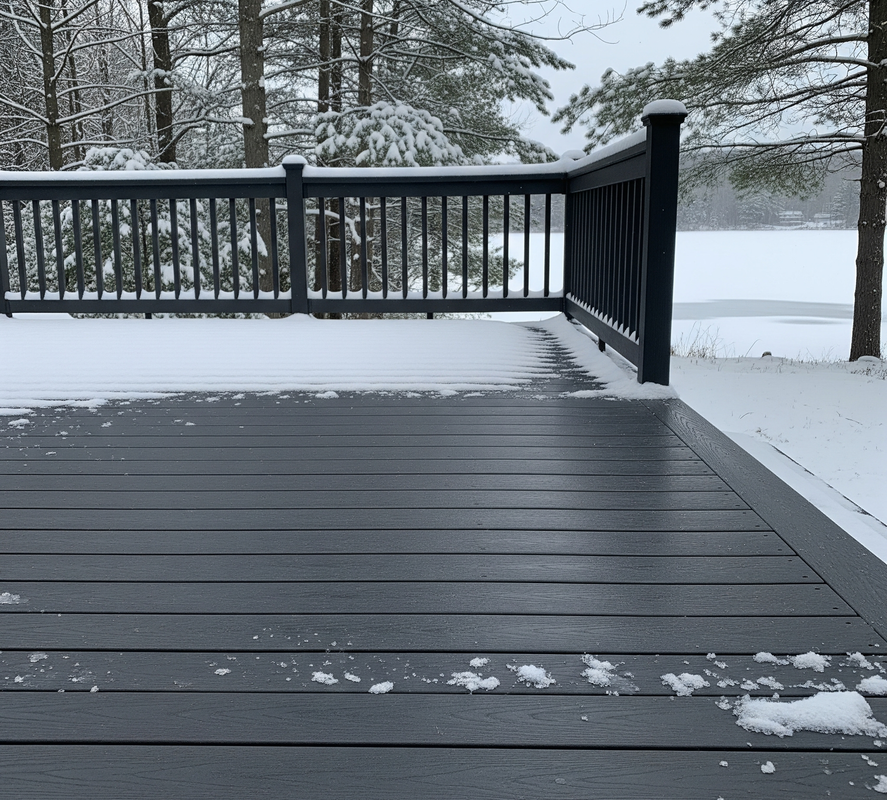 Thinking about adding a deck to your home, but worried about the cold? If you live somewhere that gets hit with snow, ice, and freezing temperatures, like much of upstate New York, you’ve got to choose your materials wisely. Not all decking holds up well in winter weather, and the last thing you want is to rebuild or constantly repair it.
Thinking about adding a deck to your home, but worried about the cold? If you live somewhere that gets hit with snow, ice, and freezing temperatures, like much of upstate New York, you’ve got to choose your materials wisely. Not all decking holds up well in winter weather, and the last thing you want is to rebuild or constantly repair it.
Let’s walk through the best decking materials for cold climates so you can build something that actually lasts.
Composite Decking: Strong, Sleek, and Reliable
Composite is one of the top choices for cold-weather decks. It’s made from a blend of wood fibers and recycled plastic, which makes it super resistant to moisture, warping, and cracking. Unlike real wood, it doesn’t absorb water easily, which is a huge plus when you’re dealing with freeze-thaw cycles.
The other bonus? It’s low-maintenance. You don’t need to stain or seal it regularly, and it comes in a variety of colors and finishes that look great year-round. It’s a bit pricier upfront, but it's totally worth it over time.
PVC Decking: All-Plastic Protection
PVC decking is another strong option if you want zero hassle. Made entirely from plastic, it won’t rot, absorb water, or attract mold. That makes it ideal for snowy, wet conditions. PVC is especially great if you want something long-lasting and slip-resistant. Many brands offer textured surfaces that work well for icy winters.
It’s a higher-end option, but for homeowners who don’t want to deal with seasonal touch-ups, PVC can be a smart investment.
Pressure-Treated Wood: Affordable but High-Maintenance
If you’re on a tight budget, pressure-treated wood is still an option, but you should be cautious. It’s more vulnerable to winter damage, such as splitting and warping, especially if moisture gets inside and freezes. Regular sealing is a must, and over time, maintenance can start to feel like a chore.
Still, it’s a classic look and widely available. Be prepared to put in extra effort to keep it in good shape.
Cedar and Redwood: Naturally Durable
Cedar and redwood are better choices for wood lovers in cold areas. These woods have natural oils that help them resist moisture and decay. They hold up better than standard pine but still need proper sealing to survive the winter.
They offer a beautiful, warm appearance, but like all wood decks, they’ll need some TLC to make it through multiple winters.
Final Thoughts
Whatever material you choose, keep winter in mind from the start. Ensure your deck design allows for proper drainage and consider incorporating non-slip surfaces for added safety.
For a full breakdown of the top materials, pros and cons, and real-life tips, take a look at this helpful guide on the best decking materials for cold climates. It’s packed with useful info to help you make the best decision for your home and your climate.





Comments (0)